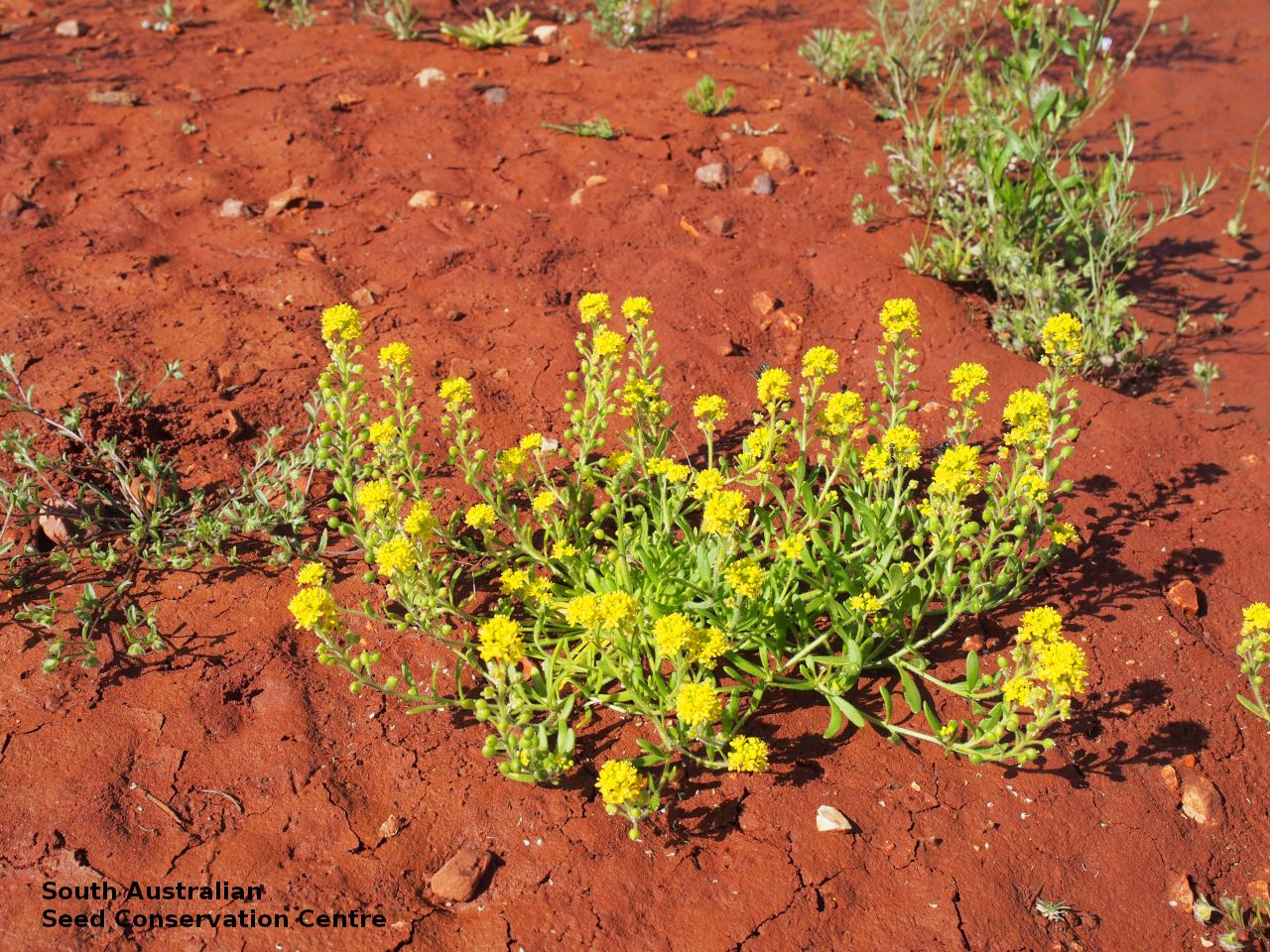

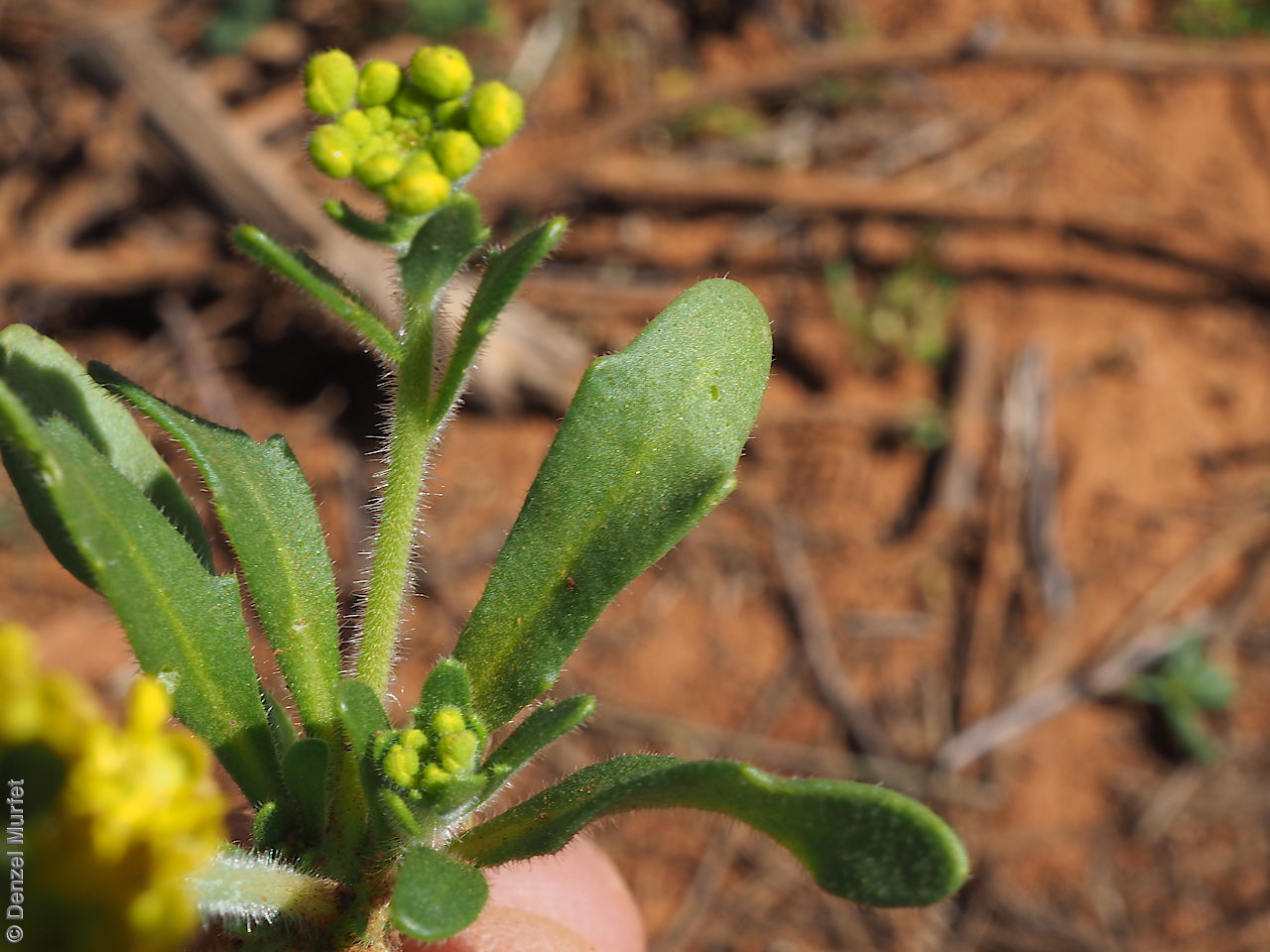
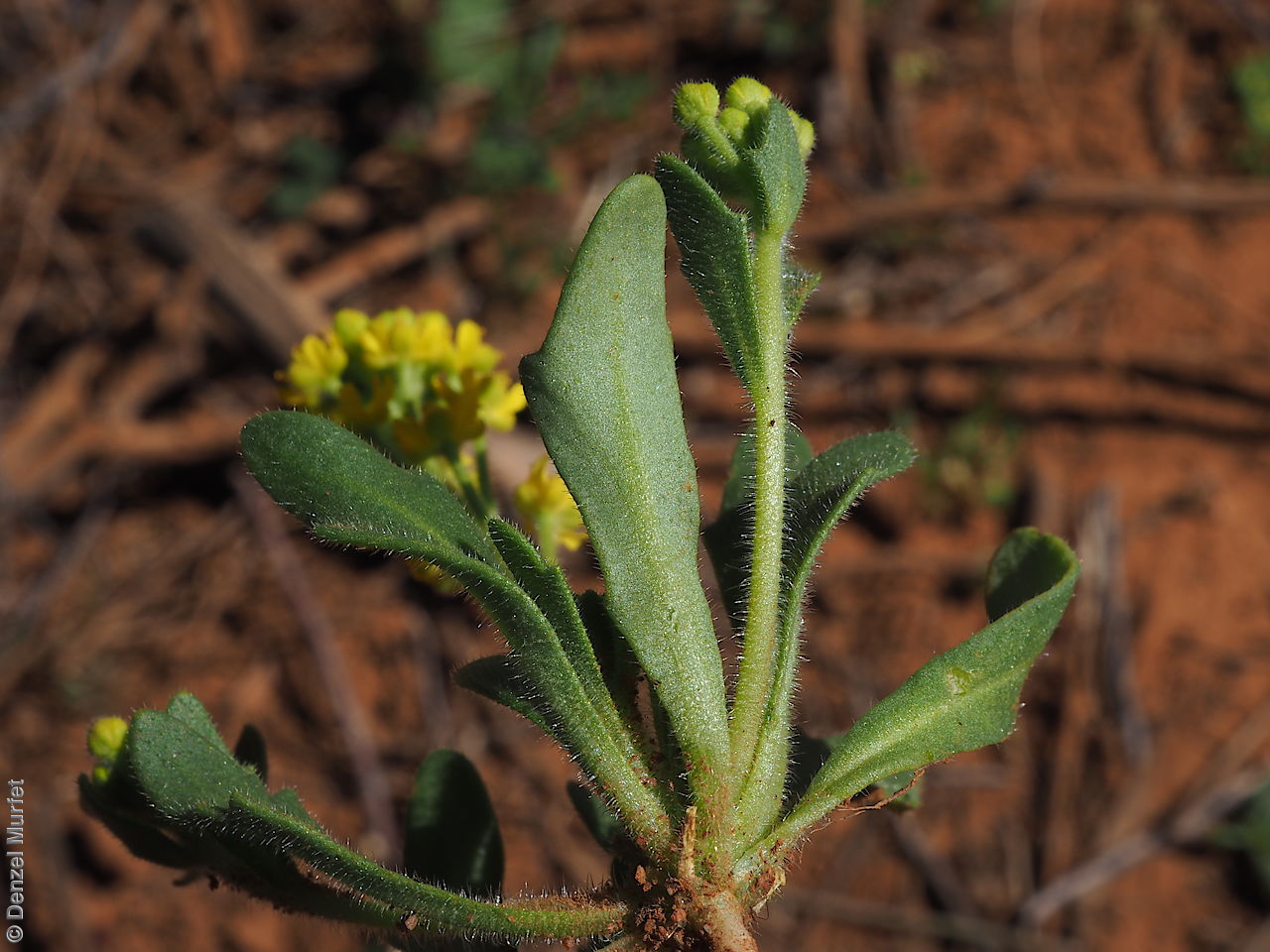
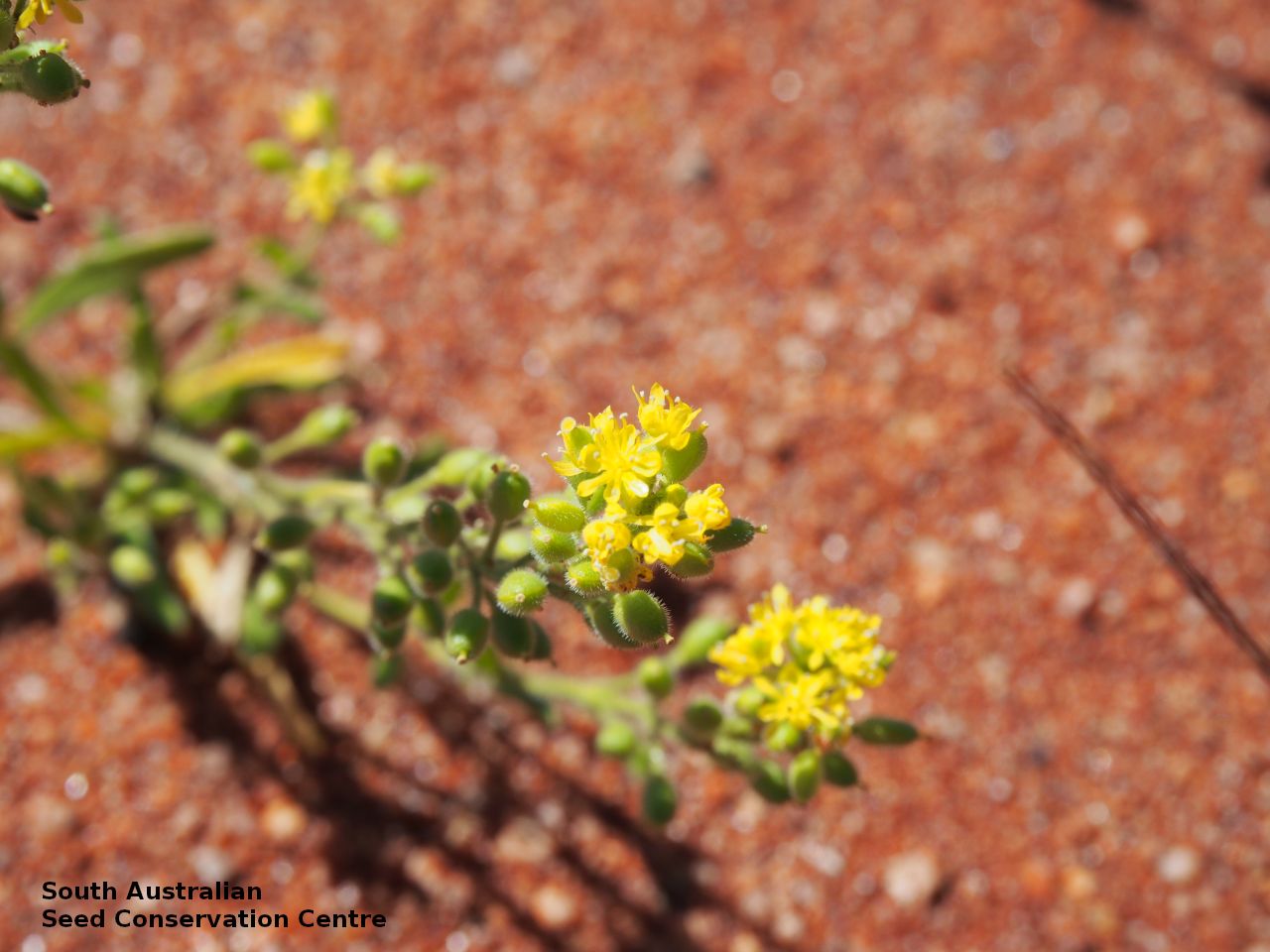

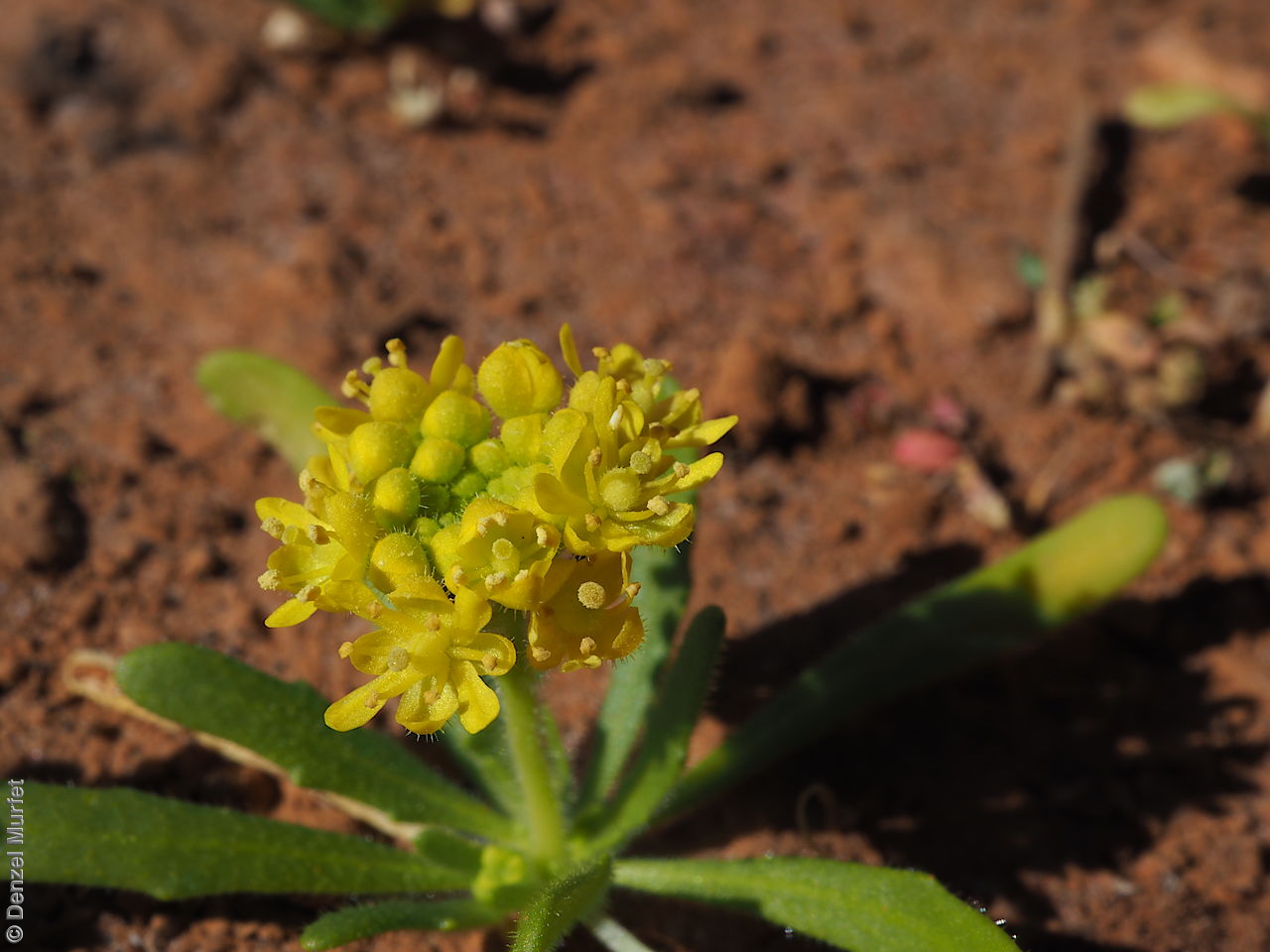
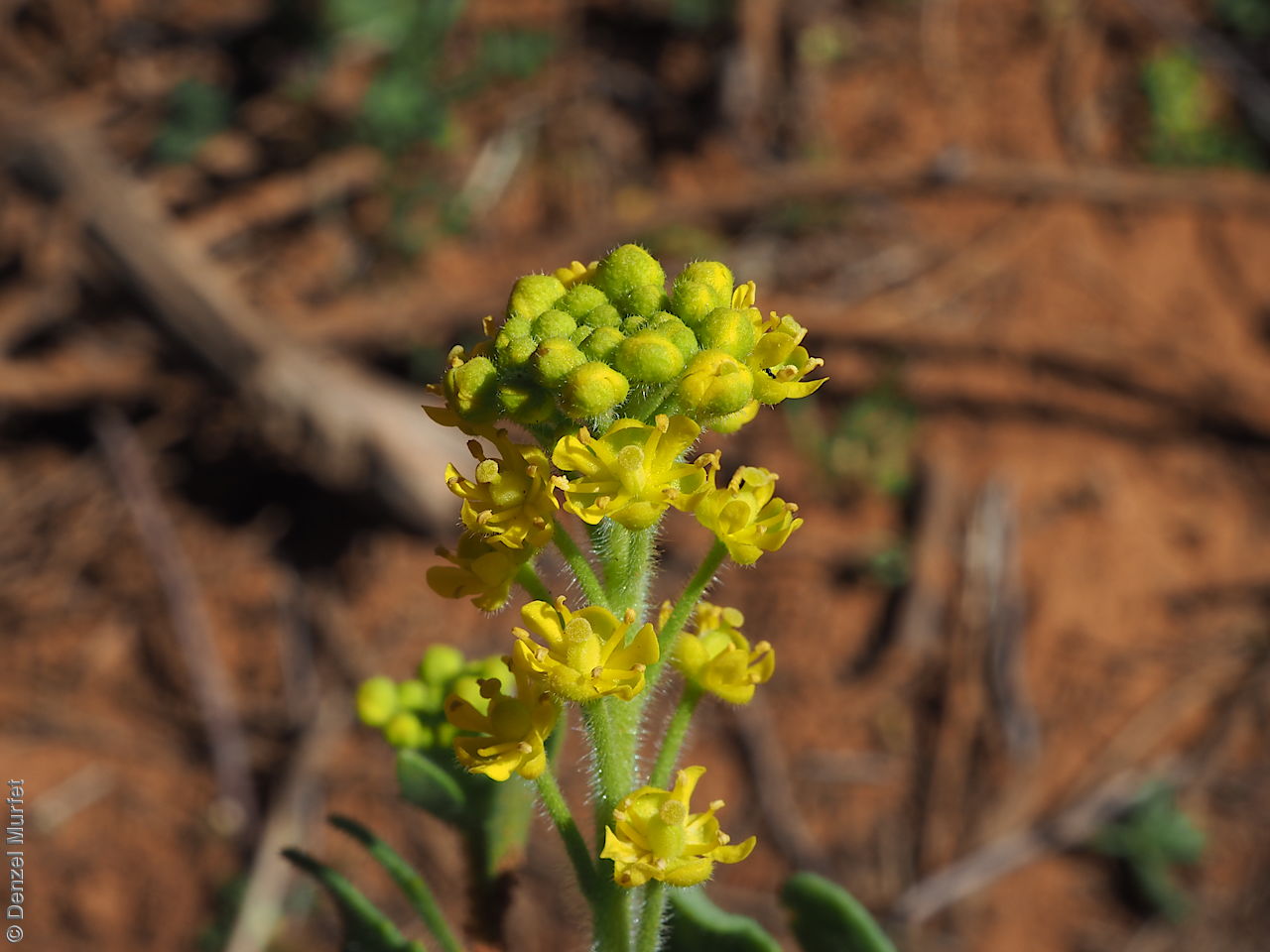
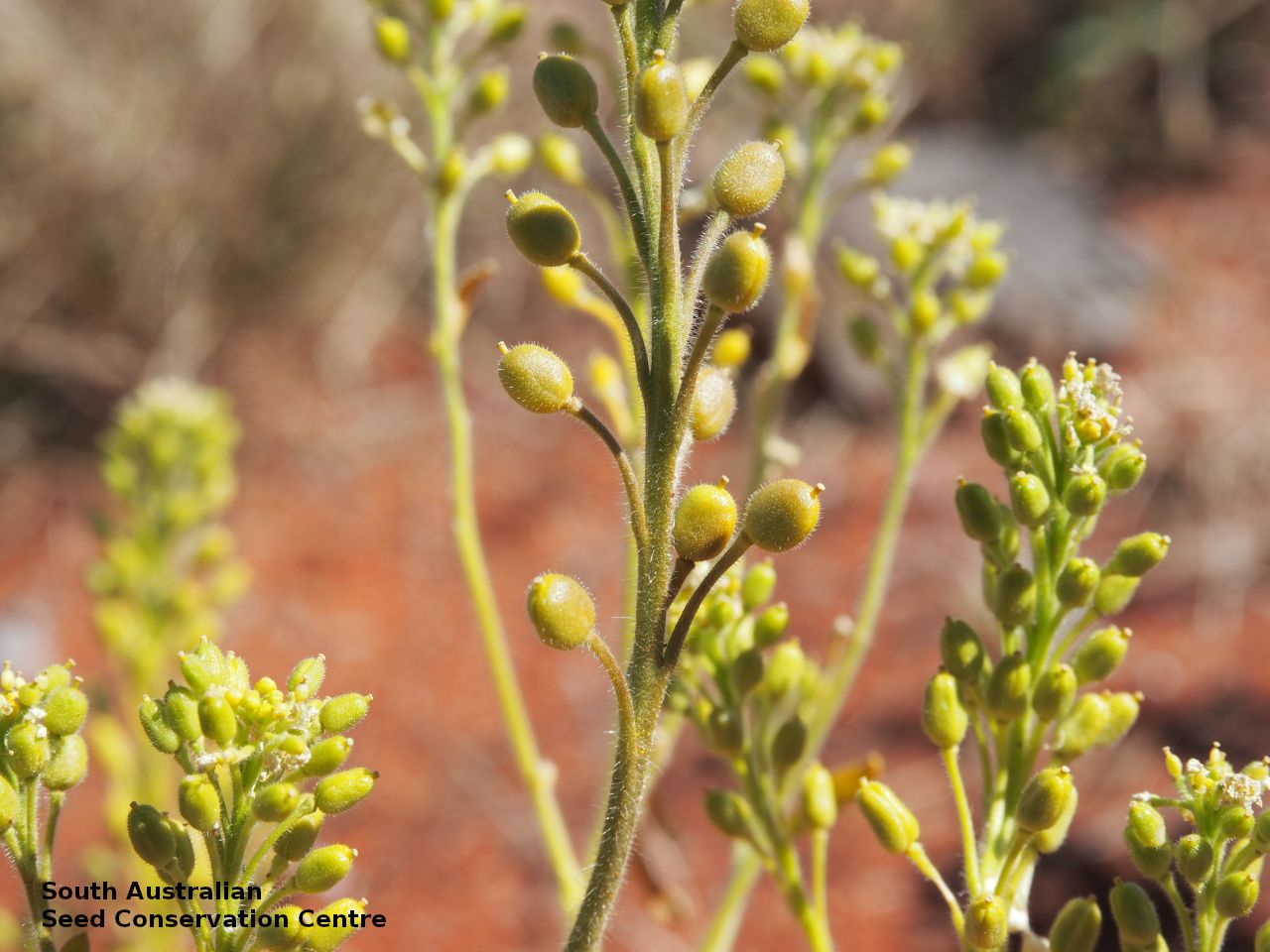

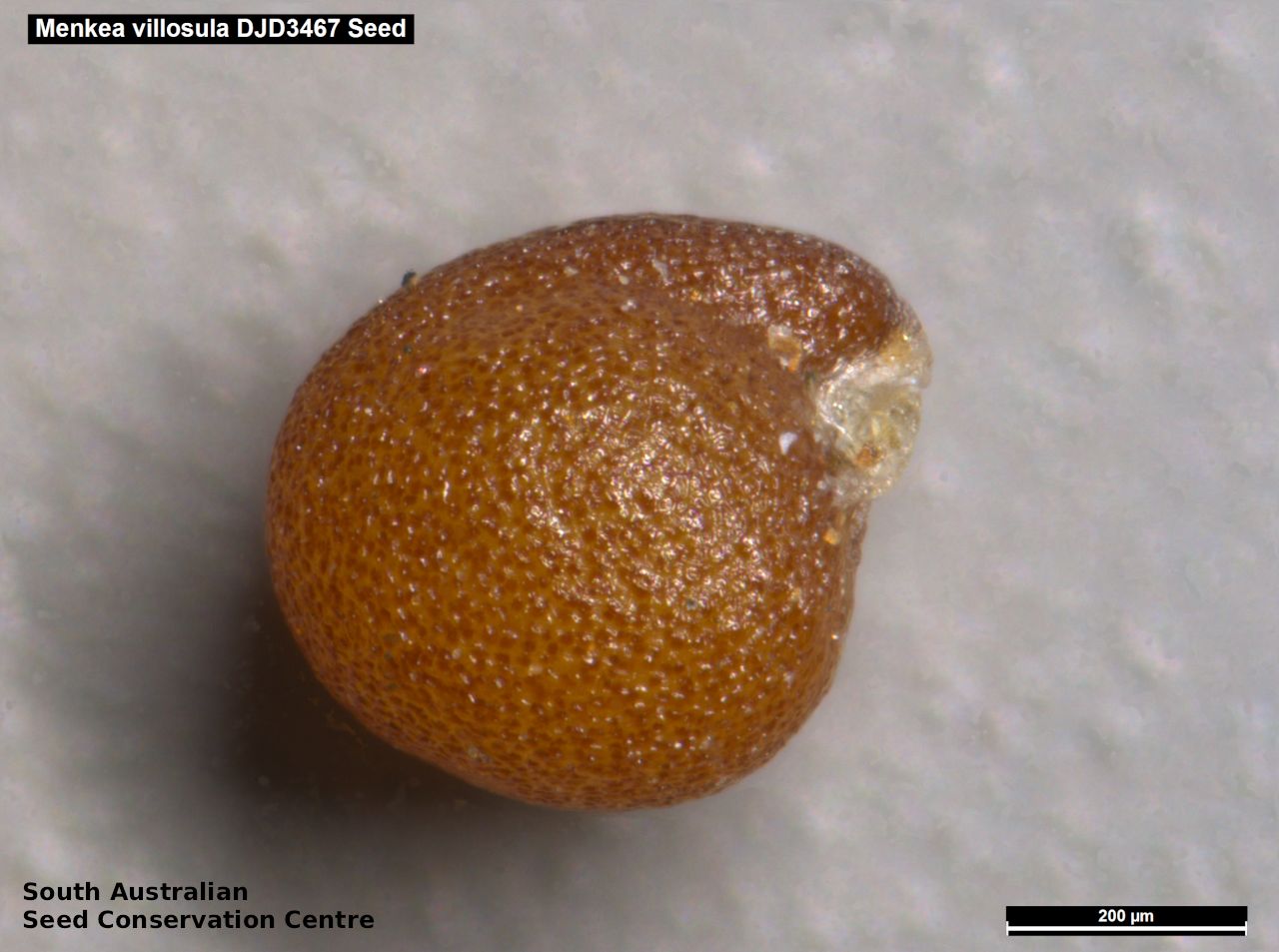
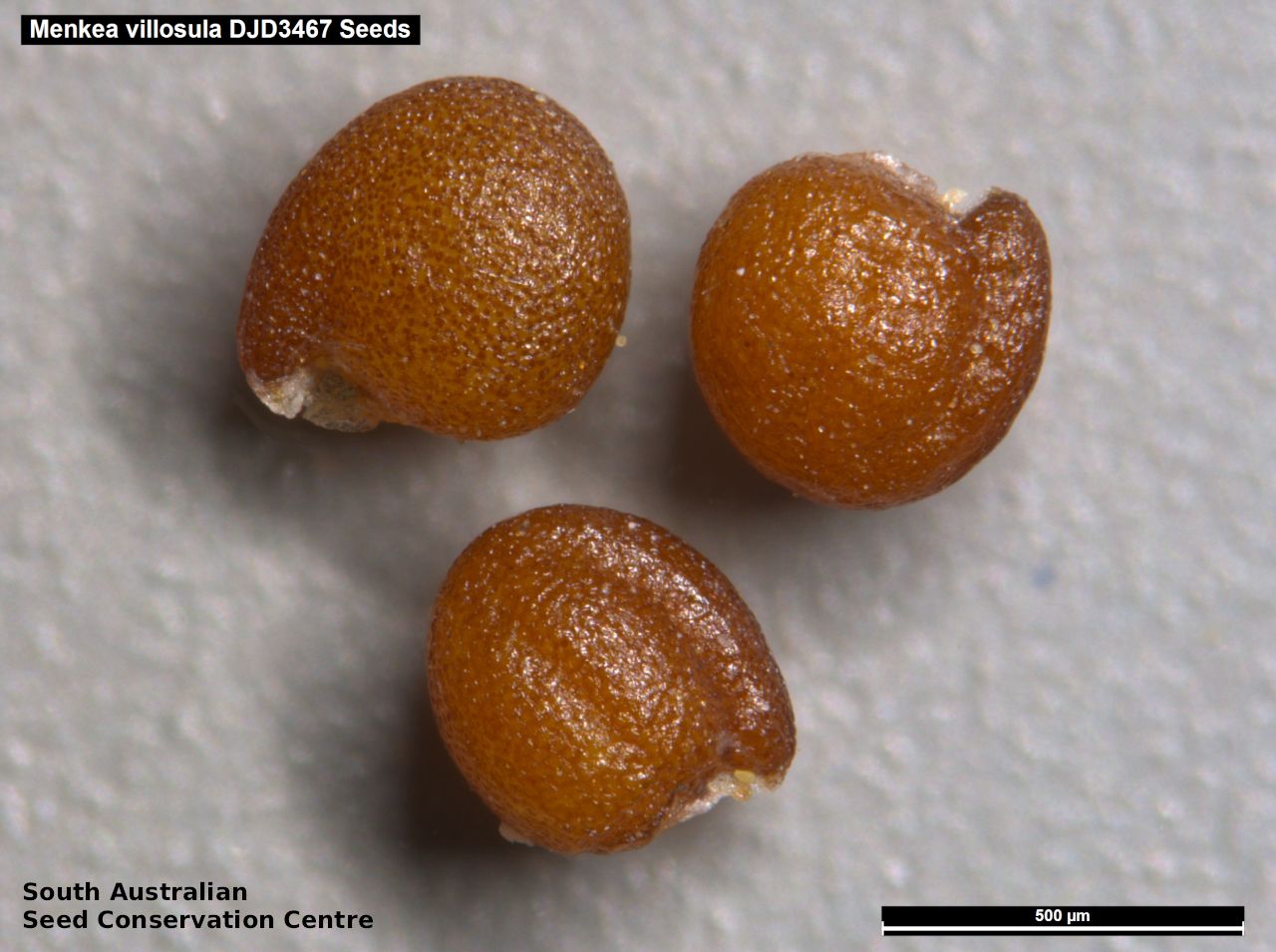
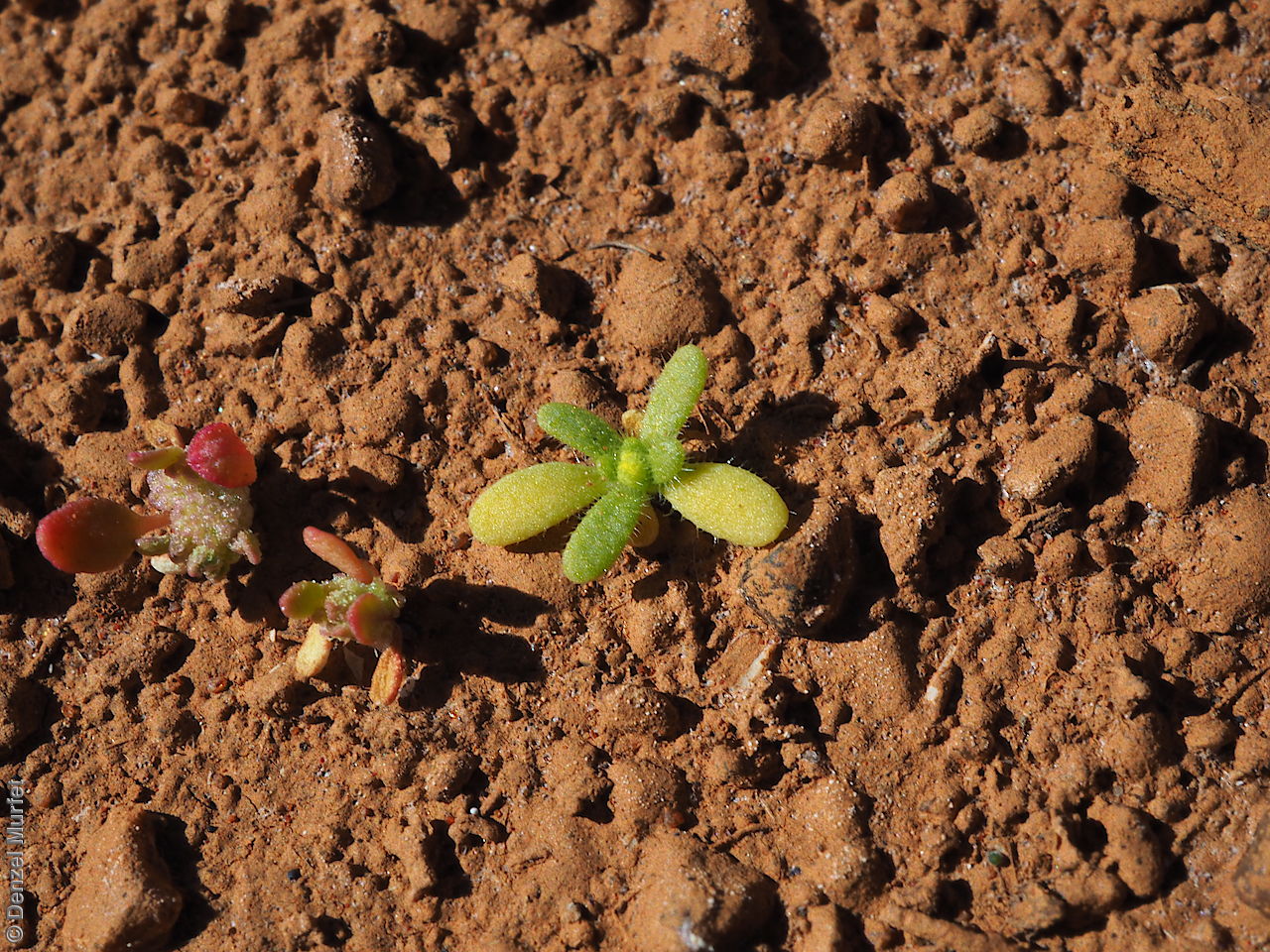

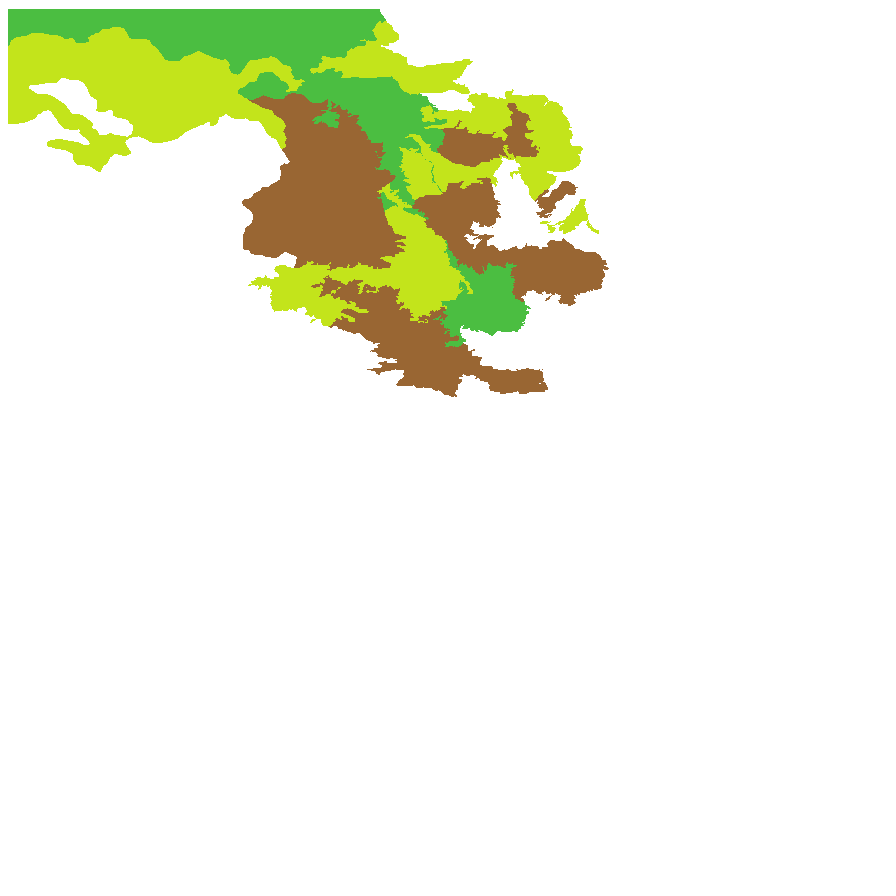
Prior names
Menkea hispidula
Phlegmatospermum villosulum
Capsella villosula
Etymology
Menkea, named after Karl Theodor Menke (1791-1861), a German malacologist, physician and botanist. Villosula, from Latin meaning slightly hairy (diminutive of 'villosus').
Distribution and status
Found in the north-western part of South Australia growing on red sandy, clayey & loamy soils. Also found in Western Australia and the Northern Territory. Native. Common in South Australia. Common in the other States.
Herbarium regions: North Western, Lake Eyre, Nullarbor, Gairdner-Torrens
NRM regions: Alinytjara Wilurara, South Australian Arid Lands
AVH map: SA distribution map (external link)
Plant description
Seeds are dark brown ellipsoid seed to 0.6 mm long and 0.5 mm wide, with a slight y wrinkled surface. Seed embryo type is bent.
Seed collection and propagation
Collect maturing pods turning pale brown, with hard seeds inside. Take care with the pods, as they split open easily. Place the pods in a tray and cover with paper to prevent seeds from popping out and leave to dry for a week. Then rub the dried pods gently by hand to dislodge the seeds. Use a sieve to separate the unwanted material. Store the seeds with a desiccant such as dried silica beads or dry rice, in an air tight container in a cool and dry place. From one collection, the seed viability was high, at 100%.
| Location | No. of seeds (weight grams) | Number of plants | Date collected | Collection number Collection location | Date stored | % Viability | Storage temperature |
|---|---|---|---|---|---|---|---|
| BGA | 510,000 (27.76 g) | 200+ | 23-Sep-2016 | DJD3467 Lake Eyre | 1-Nov-2017 | 100% | -18°C |
Number of plants: This is the number of plants from which the seeds were collected.
Collection location: The Herbarium of South Australia's region name.
% Viability: Percentage of filled healthy seeds determined by a cut test or x-ray.